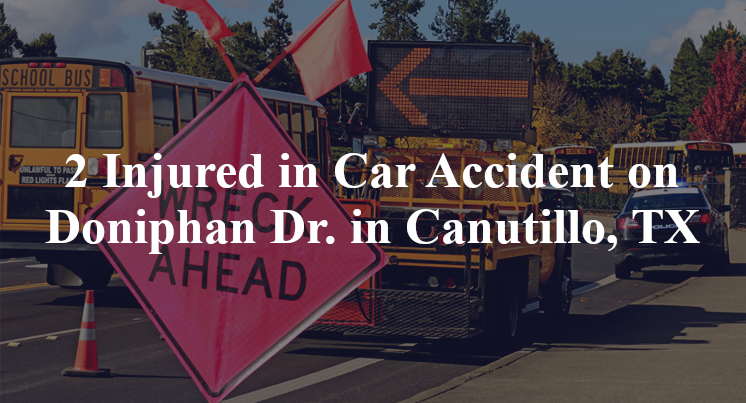2 Injured in Car Accident on Doniphan Dr. in Canutillo, TX
El Paso County, TX — June 5, 2025, two people were injured in a car accident at approximately 1:00 p.m. along Doniphan Drive (State Highway 20).
According to authorities, two people—a 35-year-old man and a 31-year-old man—were traveling in a northbound Ford F-150 pickup truck on Doniphan Drive at the Woodrow Bean Transmountain Drive (S.L. 375) intersection when the accident took place.

Officials indicate that, for as yet unknown reasons, a southbound GMC Yukon occupied by a 71-year-old woman attempted a left turn at an apparently unsafe time, failing to yield the right-of-way. A collision consequently took place between the front-end of the Ford and the front-left of the Yukon.
Both of the men from the Ford reportedly sustained serious injuries as a result of the wreck. Additional details pertaining to this incident—including the identities of the victims—are not available at this point in time. The investigation is currently ongoing.
Commentary
Crashes involving left turns across oncoming traffic are among the most dangerous—and when serious injuries result, it's not enough to say someone failed to yield. Understanding how and why that decision was made requires much more than a glance at the aftermath.
1. Did the authorities thoroughly investigate the crash?
A collision at a signalized intersection demands a clear reconstruction of vehicle movements. Was the Yukon turning with a protected arrow or on a permissive green? Did the Ford F-150 have a chance to stop, or was it already committed through the intersection? Investigators should have reviewed physical evidence—such as tire marks, debris patterns, and point-of-impact angles—to confirm the sequence of events. Without that level of detail, the real cause of the crash may be misinterpreted or lost entirely in assumptions about fault.
2. Has anyone looked into the possibility that a vehicle defect caused the crash?
If the GMC Yukon entered the intersection at an unsafe time, that still leaves open the question of why. Could there have been a delay in steering or braking response? Was the driver relying on sensor-based assistance—like blind spot detection or lane-departure warnings—that may have failed? And if the Yukon’s turn was abrupt or hesitant, was there a malfunction behind it? These vehicles rely on increasingly complex systems, and unless a full mechanical inspection was performed, it’s impossible to rule out that some part of the vehicle itself contributed to the decision-making—or failure to react appropriately.
3. Has all the electronic data relating to the crash been collected?
Both the GMC Yukon and the Ford F-150 likely contain event data recorders that could offer valuable insight into what happened just before impact. Pre-crash speed, throttle input, brake usage, and steering angles could confirm whether the Ford attempted to stop or whether the Yukon turned suddenly. Nearby traffic cameras or commercial surveillance footage might also provide critical visual evidence. If investigators didn’t secure this data quickly, the opportunity to build a complete picture may already be slipping away.
It’s easy to blame a bad turn, but understanding why it happened—and whether anything else played a role—is the only way to ensure this type of crash doesn’t repeat itself. Real answers require real effort.
Key Takeaways:
- Left-turn crashes must be supported by full scene reconstruction and signal timing analysis.
- Vehicle malfunctions or sensor system failures in the turning vehicle should be ruled out.
- Event data recorders and nearby camera footage are essential for confirming vehicle movements and reactions.

*We appreciate your feedback and welcome anyone to comment on our blog entries, however all visitor blog comments must be approved by the site moderator prior to showing live on the site. By submitting a blog comment you acknowledge that your post may appear live on the site for any visitors to see, pending moderator approval. The operators of this site are not responsible for the accuracy or content of the comments made by site visitors. By submitting a comment, blog post, or email to this site you acknowledge that you may receive a response with regard to your questions or concerns. If you contact Grossman Law Offices using this online form, your message will not create an attorney-client relationship and will not necessarily be treated as privileged or confidential! You should not send sensitive or confidential information via the Internet. Since the Internet is not necessarily a secure environment, it is not possible to ensure that your message sent via the Internet might be kept secure and confidential. When you fill out a contact or comment form, send us an email directly, initiate a chat session or call us, you acknowledge we may use your contact information to communicate with you in the future for marketing purposes, but such marketing will always be done in an ethical way.